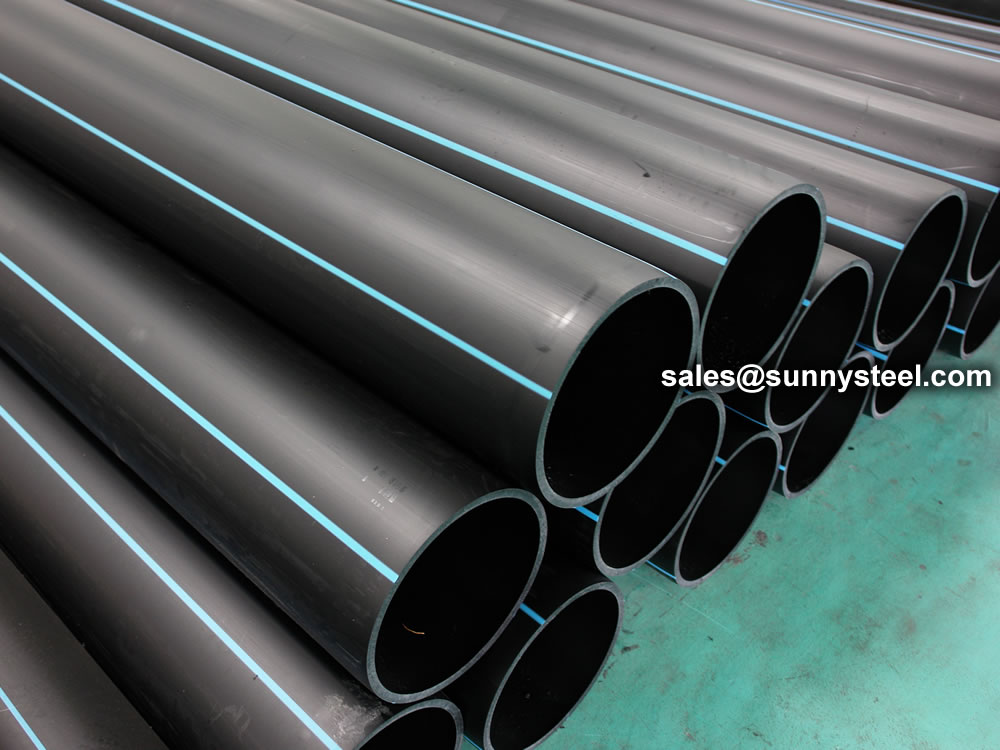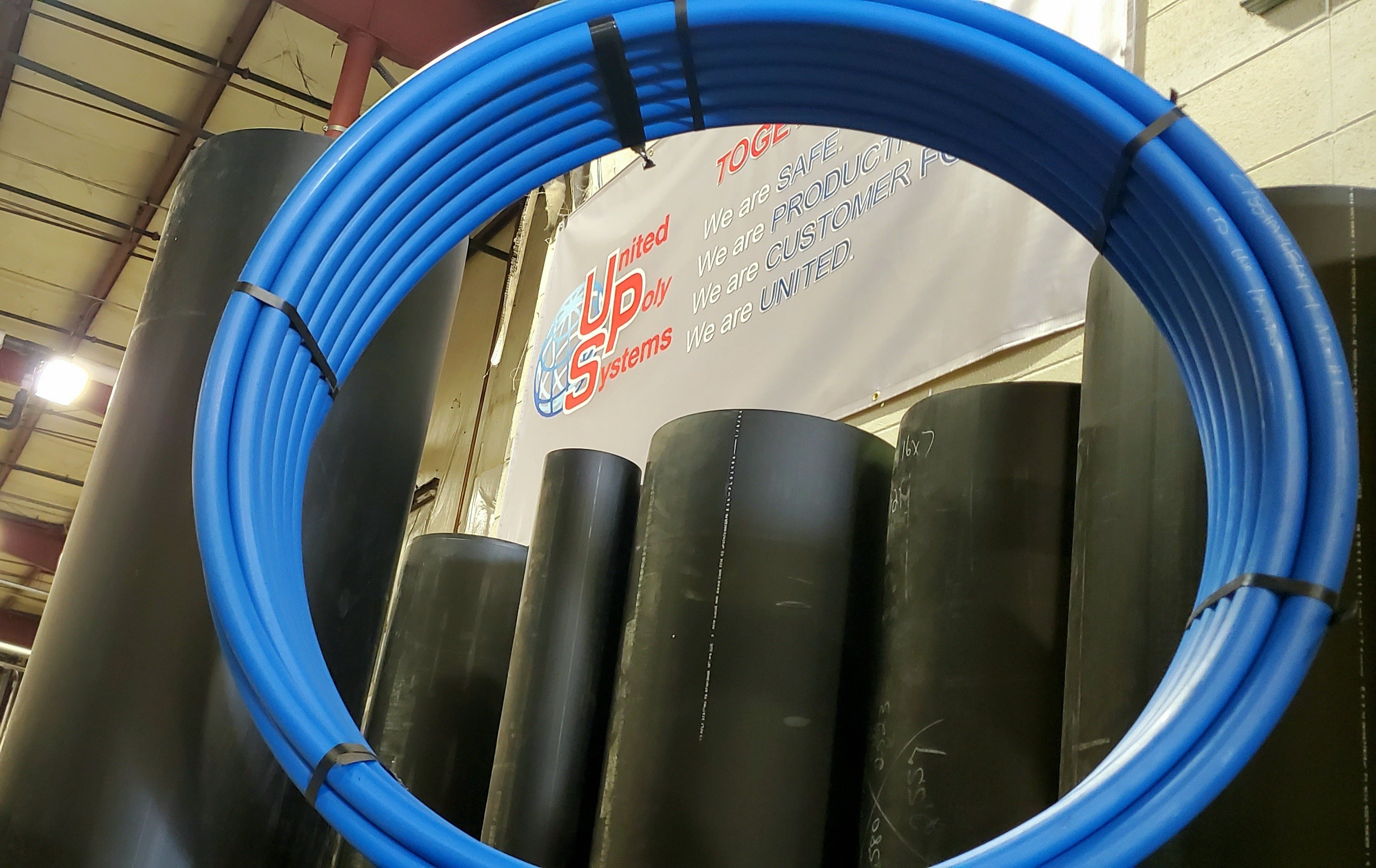Practical Overview to hdpe pipe fittings Midland TX and Their Uses
Wiki Article
The Important Steps for Effective Installation of HDPE Pipe in Your Next Job
Effective installment of HDPE pipeline calls for careful planning and implementation. Secret actions consist of reviewing project needs, preparing the website, and choosing correct signing up with strategies. Each stage plays a critical function in making certain the honesty and efficiency of the pipe. Recognizing these important actions can considerably affect the general success of the job - custom hdpe pipe manufacturing Midland TX. Nevertheless, the subtleties of each action might hold the secret to conquering common challenges faced during installationRecognizing the Benefits of HDPE Pipe
High-density polyethylene (HDPE) pipeline uses various advantages that make it a preferred selection for different applications. Its high resistance to corrosion and chemicals warranties sturdiness in demanding environments, greatly extending the lifespan of installments. Furthermore, HDPE's flexibility permits less complicated installation, specifically in tough terrains, as it can flex without damaging. The lightweight nature of HDPE pipe simplifies transportation and handling, minimizing labor prices during installment.HDPE pipe is understood for its low friction coefficient, which boosts fluid circulation and reduces power consumption. Its seamless construction minimizes the risk of leaks, adding to better source monitoring and environmental management. Furthermore, HDPE is recyclable, lining up with lasting practices and lowering environmental impact. On the whole, the combination of stamina, adaptability, and eco-friendliness makes HDPE pipe a remarkable selection for a large range of projects, from water distribution to industrial applications.
Planning Your HDPE Pipeline Installment
When preparing a setup of HDPE pipeline, cautious factor to consider of numerous key aspects is essential to secure a successful project. First, task managers should examine the certain needs of the pipe, consisting of the intended use, flow rates, and environmental problems. Recognizing these parameters will certainly lead the option of appropriate pipeline measurements and product quality.Next off, timelines should be developed, considering purchase routines and any type of prospective hold-ups. Control with regional authorities for licenses and regulative compliance is also important. In addition, a thorough spending plan must be prepared, including all costs related to materials, labor, and machinery.
It is vital to involve a qualified team experienced in HDPE pipe installment. Their know-how will certainly assist reduce risks, warranty adherence to sector requirements, and eventually add to the project's success. Comprehensive preparation lays the groundwork for a smooth installation procedure and lasting efficiency of the HDPE piping system.
Preparing the Site for Installation
Correct website prep work is vital for the effective setup of HDPE pipe. Before installation starts, the site has to be thoroughly analyzed to ensure it fulfills all necessary demands. This includes surveying the ground for existing structures, energies, and prospective dangers that could impede the installation procedure.

Proper altitude and positioning should be established to keep a constant slope for drainage objectives. Correct drain around the installation site is additionally necessary to stop water build-up, which can result in difficulties down the line.
Strategies for Signing Up With HDPE Pipes
Attaining a reputable connection between HDPE pipelines is necessary for guaranteeing the integrity and long life of the setup. Different strategies exist for signing up with these pipelines, each fit for different job demands. Blend welding is just one of one of the most usual approaches, utilizing warm to bond the pipe finishes with each other, developing a seamless and resilient link. This strategy can be additional classified right into outlet combination and butt blend, depending upon the pipeline setups.Mechanical installations are an additional alternative, utilizing clamps and threaded connectors to join sections of HDPE pipeline. While normally faster to mount, they might need added upkeep over time. Electrofusion is a specific technique that entails making use of electric existing to warm and fuse the pipes via specifically made installations, ensuring a solid bond. Choosing the appropriate joining strategy is critical, as it directly impacts the total efficiency and dependability of the HDPE piping system in the desired application.
Testing and Evaluation of Installed Pipeline
The testing and examination of mounted HDPE pipelines are important to ensuring their performance and longevity. This procedure includes aesthetic inspection methods, stress screening approaches, and leak discovery procedures to recognize prospective problems. By using these techniques, professionals can validate the integrity of the installation prior to it is taken into usage.Visual Assessment Techniques
Utilizing efficient visual evaluation methods is crucial for ensuring the stability of installed HDPE pipes. Examiners need to systematically examine all noticeable areas of the pipeline to identify any kind of indications of damage, imbalance, or improper installment. Trick indicators to examine include joint stability, surface area abnormalities, and connections. Inspectors may use tools such as amplifying glasses or electronic cameras to enhance presence and detail. It is vital to look for signs of environmental anxiety, such as distorting or too much flexing, which can jeopardize efficiency. Consistent documentation of searchings for allows for tracking changes with time and assists guide required fixings. By sticking to well-known visual inspection protocols, project teams can significantly minimize the threat of future failures and ensure lasting dependability of the piping system.Pressure Testing Approaches
Aesthetic assessment functions as an initial procedure, yet it is not enough on its own to guarantee the efficiency of set up HDPE pipes. Pressure testing techniques are crucial for making sure the stability of these systems. Typically, hydrostatic testing is employed, where the pipes are full of water and based on pressure degrees above the desired operating pressure. This approach helps determine weak points or possible leaks. Pneumatically-driven screening can additionally be used, although it brings higher threats as a result of the compressibility of air. Despite the approach picked, adhering to sector requirements and security procedures is crucial. After carrying out stress tests, complete documentation is required to verify the results and verify that the installation meets all operational requirements prior to proceeding to the following phase of the job.
Drip Discovery Procedures
Just how can one assure that installed HDPE pipelines are devoid of leaks? Reliable leakage discovery procedures are important to secure the integrity of the system. Initially, aesthetic examinations should be carried out, seeking signs of water build-up or dirt disintegration around pipe joints. Following this, stress screening can verify the system's toughness. A typical technique is the hydrostatic test, where water is presented under stress, checking for declines that suggest potential leakages. Furthermore, advanced technologies, such as acoustic sensors or infrared thermography, can discover leakages that may not be visible. Normal monitoring and maintenance additional add to the long life of HDPE pipes, ensuring they stay leak-free throughout their operational life-span. Proper documents of these procedures is essential for compliance and future reference.Maintenance Tips for Long-Term Performance
To assure the long life of HDPE pipes, developing a regular inspection schedule is important. This aggressive strategy permits for the very early detection of possible problems, lessening pricey fixings. Furthermore, applying proper cleansing techniques will certainly assist maintain peak efficiency and prevent accumulation that can impact performance.Regular Evaluation Set Up
HDPE pipes are understood for their toughness and resistance to corrosion, developing a normal inspection schedule is vital for ensuring their lasting efficiency. Routine inspections help recognize potential issues such as leakages, joint honesty, hdpe tubing and environmental influences that might affect the pipeline's functionality. It is recommended that examinations occur at the very least biannually, or much more often in environments with severe conditions. American Plastics HDPE Pipe Manufacturing. During these assessments, visual checks need to be conducted to spot indications of wear or damage. Additionally, using modern technology such as ultrasonic screening can supply additional insights into the pipe's problem. By executing an organized examination schedule, project supervisors can proactively attend to issues, thus prolonging the lifespan of HDPE pipelines and keeping system performanceCorrect Cleansing Techniques
Correct cleansing techniques play a necessary role in maintaining the long-term performance of HDPE pipes. Routine cleaning avoids the build-up of debris, sediment, and biofilm, which can bring about obstructions and decreased flow performance. Operators should utilize methods such as high-pressure water jetting or foam cleaning to efficiently get rid of impurities without damaging the pipe surface. It is essential to avoid utilizing extreme chemicals that may deteriorate HDPE product. Additionally, set up maintenance checks must include visual evaluations for any kind of indications of wear or damages. Appropriately trained employees need to perform these cleansing procedures, ensuring conformity with safety and ecological guidelines. By implementing these practices, the life-span of HDPE pipelines can be substantially expanded, making sure suitable efficiency throughout their functional life.Frequently Asked Inquiries
What Are the Environmental Influences of HDPE Pipeline Production?
The ecological impacts of HDPE pipeline manufacturing include greenhouse gas discharges, power intake during manufacturing, possible plastic contamination, and obstacles in recycling. HDPE's durability and resistance to deterioration can alleviate some ecological problems.How Does HDPE Pipe Contrast to Other Materials?

What Equipment Are Necessary for HDPE Pipeline Installation?
Crucial tools for HDPE pipe installment consist of a combination device, pipe cutters, shovels, measuring tape, and security gear. Proper equipment guarantees effective, safe handling and setup, contributing to the task's overall success and integrity.Are There Any Kind Of Particular Laws for HDPE Pipeline Installment?
Specific regulations for HDPE pipeline setup vary by region, often controlled by neighborhood, state, or federal codes. Conformity with these guidelines guarantees security, environmental drain lining management, and performance, making adherence vital for effective project outcomes.Can HDPE Piping Be Recycled After Use?
Yes, HDPE pipelines can be reused after usage. Their thermoplastic nature special info enables reprocessing, making them appropriate for reusing into new items. This sustainability element contributes to environmental conservation and advertises circular economic climate methods in building and construction.Report this wiki page